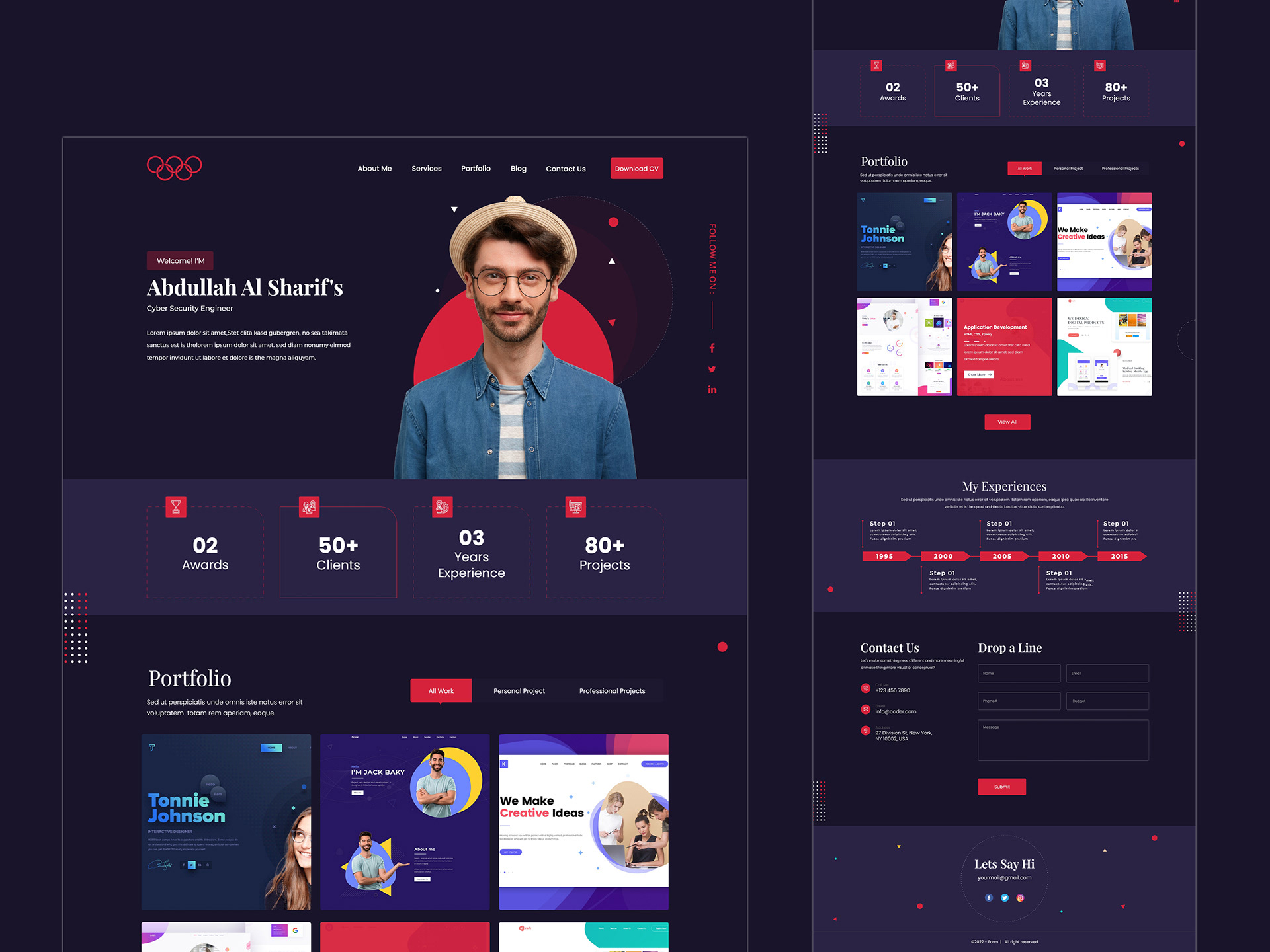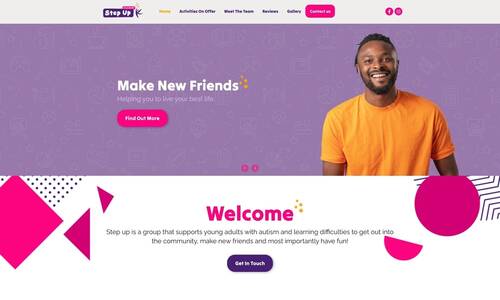How Professional Website Design Helps Build Trust with Your Audience
How Professional Website Design Helps Build Trust with Your Audience
Blog Article
Modern Site Style That Records Focus and Converts
In a progressively digital landscape, contemporary website style has actually arised as a crucial element in recording user focus and driving conversions. As we explore these essential elements, it comes to be clear that understanding their interplay can substantially impact an internet site's performance and customer contentment.
Significance of Visual Hierarchy
Aesthetic power structure is an important element in web site layout, as it guides users' attention and enhances their overall experience. By tactically organizing web content, designers can direct users to the most important info first, therefore increasing engagement and improving usability.
Including a logical flow in content setup is necessary; for example, placing one of the most vital information on top of a page promotes immediate acknowledgment. Constant use of typography, such as differing font sizes and designs, assists establish a clear material structure. This organization not just help in navigation but additionally develops trust fund, as users feel a lot more comfy when they can conveniently find what they are seeking.
Inevitably, a well-executed aesthetic pecking order not only improves aesthetic charm but also substantially influences individual actions. By focusing on vital aspects and making sure a seamless experience, designers can properly transform site visitors into consumers, reinforcing the value of this fundamental layout concept in modern-day web site development.
Responsive Layout for All Devices
Developing a seamless experience across various tools is essential in today's digital landscape, where users access web sites from mobile phones, desktops, and tablet computers alike. Responsive layout is an important technique that makes sure web sites adapt fluidly to various display positionings, dimensions, and resolutions. By utilizing versatile grids, images, and CSS media questions, developers can produce layouts that maintain visual stability and capability, no matter the tool being used.
The relevance of responsive layout extends beyond visual appeals; it straight impacts individual involvement and conversion rates. An internet site that works well on all devices urges longer check outs and minimizes bounce rates, as customers are extra likely to connect with content that is very easy to browse. Furthermore, internet search engine, particularly Google, prioritize mobile-friendly sites in their positions, making responsive style an important part of search engine optimization (SEO)
Including receptive layout not only boosts user experience however likewise simplifies the advancement procedure. By creating a solitary website that works throughout devices, companies can conserve time and resources compared to developing different mobile and desktop versions. Eventually, receptive layout is a fundamental approach for modern web site style, guaranteeing availability and contentment for all users, no matter of their device.
Engaging Interactive Components
While a receptive design lays the foundation for a useful website, incorporating appealing interactive aspects is essential for recording customer focus and promoting much deeper connections. Website Design. Interactive components, such as computer animations, quizzes, and clickable infographics, develop a much more dynamic customer experience, motivating visitors to spend more time on the site
Integrating interactive functions can also direct customers through complicated information, making it less complicated to absorb content. For instance, interactive sliders can highlight product variations, while embedded videos can give demos or reviews that resonate greater than static photos or message. Gamification techniques, like benefits for finishing tasks or involving with content, can boost customer inspiration and retention.
Reliable usage of interactive elements not only enriches the individual experience however can additionally lead to greater conversion rates. It is important to balance interactivity with efficiency; overly complex functions might hinder site rate, adversely affecting individual satisfaction.
Structured Navigation Practices
Reliable navigation is a foundation of any kind of effective web site, as it straight affects user experience and material availability. Structured navigation practices guarantee that users can easily situate info, enhancing their communication with the website. A well-structured navigation food why not try these out selection need to be instinctive and simple, normally including a limited number of main categories to avoid frustrating site visitors.
To achieve structured navigating, designers ought to prioritize a hierarchical structure that logically organizes web content. Implementing breadcrumb routes can provide customers with context regarding their current location within the website, permitting for smooth backtracking. Furthermore, utilizing drop-down menus can efficiently conserve room while still offering accessibility to subcategories.
Responsive style is important, as navigating must be practical across all tools (Website Design). Mobile users, specifically, advantage from touch-friendly menus and retractable areas that maintain functionality without compromising appearances

Reliable Call-to-Action Methods
A well-crafted call-to-action (CTA) is essential for assisting individuals towards desired outcomes on an internet site, as it encourages them to involve with material or make a purchase. To maximize their performance, CTAs need to be clear, compelling, and purposefully put throughout the site.
First, utilize action-oriented language that connects seriousness or worth, such as "Get going," "Sign up with Now," or "Insurance claim Your Discount." This language not just motivates customers yet additionally my explanation establishes clear expectations concerning the next actions.
Second, take into consideration design components; CTAs need to stand out aesthetically through contrasting shades, ample whitespace, and famous positioning. A button that is simple to see and click increases the possibility of user interaction.
Furthermore, individualizing CTAs based upon customer habits or demographics can considerably enhance involvement. Customized messages reverberate much more with users, driving higher conversion rates.

Final Thought
Finally, visit this site right here contemporary site design emphasizes the combination of aesthetic power structure, responsive formats, involving interactive elements, structured navigating, and effective call-to-action approaches. These parts collectively improve user experience, making sure that site visitors stay engaged and motivated to check out web content further. By focusing on these style principles, companies can significantly boost user retention and conversion prices, eventually leading to better success in the digital landscape. The constant development of website design emphasizes its critical duty in efficient online communication and advertising.
In a progressively digital landscape, modern site design has emerged as an essential factor in recording user focus and driving conversions.Visual power structure is a vital component in site layout, as it overviews customers' attention and enhances their total experience.The value of responsive layout extends beyond aesthetic appeals; it straight affects individual involvement and conversion prices.Incorporating receptive design not just boosts customer experience but also enhances the advancement procedure. Eventually, receptive layout is an essential method for modern website layout, making sure ease of access and complete satisfaction for all users, no matter of their device.
Report this page